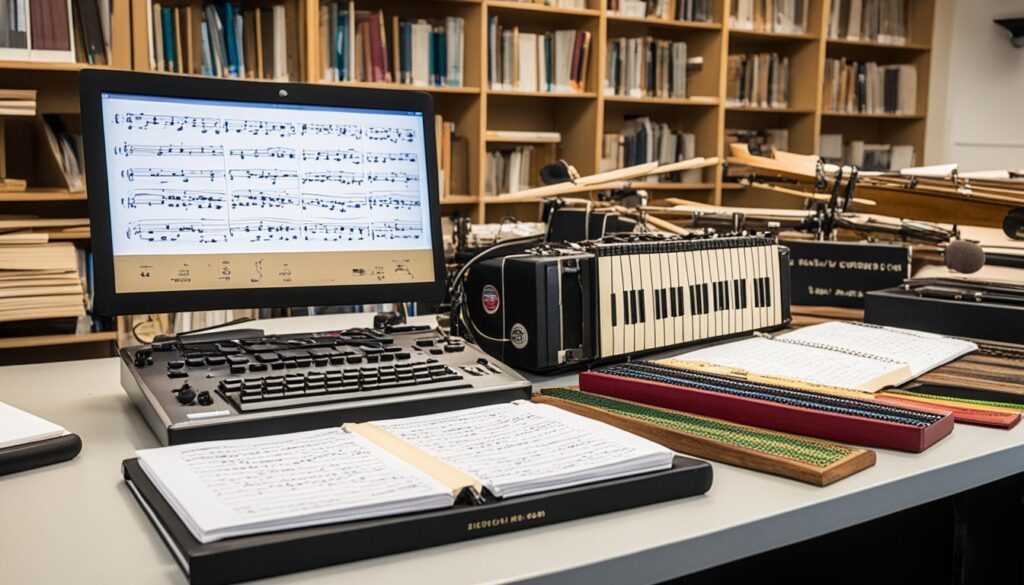Did you know that the Kensiu language, spoken by the Kensiu tribe in Thailand and Malaysia, is an endangered language in urgent need of preservation and revitalization? With a small community of only 300 speakers in Yala Province, Thailand, and another 300 in Perak and Kedah States, Malaysia, the Kensiu language faces the threat of extinction. However, efforts are being made to document, preserve, and revitalize this unique indigenous language to ensure its survival and promote linguistic diversity.
Cultural Significance of the Kensiu Language
The Kensiu language holds great cultural significance as it is an integral part of the indigenous culture of the Mani people. Through their language, the Mani people preserve and transmit their traditional knowledge, cultural practices, and historical narratives. The language acts as a vehicle for expressing their cultural identity and serves as a means of maintaining their connection to their ancestral heritage.
“Language is not just a means of communication for the Mani people; it is an embodiment of our cultural identity and a repository of our traditional wisdom.”
The Kensiu language plays a crucial role in shaping the Mani community’s values, belief systems, and rituals. It is deeply intertwined with their daily lives, from storytelling and folklore to traditional ceremonies and songs. By using their indigenous language, the Mani people reinforce their cultural bonds, strengthening their sense of belonging and pride in their heritage.
Furthermore, the Kensiu language serves as a medium for preserving and passing down traditional knowledge about medicinal plants, hunting techniques, and ecological practices. It enables the Mani community to maintain a close relationship with their environment and sustain their traditional way of life. The language also acts as a bridge between generations, facilitating the intergenerational transfer of cultural practices and ensuring the continuity of their ancestral wisdom.
Preservation of the Kensiu language is essential for safeguarding the cultural legacy of the Mani tribe and promoting linguistic diversity. By supporting the retention and revitalization of the Kensiu language, we not only honor the rich cultural heritage of the Mani people but also contribute to the broader recognition and protection of indigenous languages worldwide. It is through the preservation of their language that the Mani community can continue to thrive, maintaining their unique cultural identity and passing it on to future generations.
Language Documentation and Endangerment
Efforts to preserve and study the endangered Kensiu language are essential to ensure its survival. Linguists, anthropologists, and language researchers are actively involved in language documentation projects aimed at collecting and recording data on Kensiu vocabulary, grammar, and cultural practices. Through these initiatives, a comprehensive record of the Kensiu language is being created, creating a valuable resource for future generations and supporting language revitalization efforts.
Language documentation techniques such as audio and video recordings, community interviews, and archival research play a crucial role in capturing the intricacies of the Kensiu language. These tools allow researchers to document not only the linguistic aspects but also the cultural nuances embedded within the language. By utilizing a multidisciplinary approach, linguistic research on Kensiu ensures the preservation of both the language itself and the rich cultural heritage it represents.
Language documentation projects play a vital role in documenting endangered languages like Kensiu. These initiatives not only record linguistic data but also highlight the cultural significance of the language and contribute to the broader field of linguistic research.
Language documentation also serves as a foundation for language revitalization efforts. By creating a detailed record of the Kensiu language, future generations can access and learn from its unique features, preventing further endangerment and contributing to the preservation of linguistic diversity.

Language documentation tools and techniques play a crucial role in capturing the essence of the Kensiu language. Audio and video recordings allow for the preservation of spoken words and intonations, while community interviews provide valuable insights into language usage and cultural practices. Additionally, archival research helps uncover historical documents and materials related to the Kensiu language, further enriching the documentation process.
Benefits of Language Documentation and Research
- Preservation of endangered languages
- Documentation of linguistic and cultural knowledge
- Contribution to linguistic research
- Support for language revitalization efforts
- Promotion of linguistic diversity
Through ongoing language documentation and research, the Kensiu language can continue to be acknowledged and appreciated for its linguistic and cultural significance. The efforts of linguists, researchers, and the indigenous community contribute to the broader understanding of language endangerment and revitalization, highlighting the importance of preserving indigenous languages for future generations.
Conservation and Revitalization Efforts
Various organizations and community initiatives are actively engaged in the preservation and revitalization of the Kensiu language. Through language preservation programs driven by the Mani community, efforts are focused on raising awareness of the importance of the Kensiu language and promoting its use in daily life. These programs also involve the development of educational materials and resources to support language learning within the community.
Language revitalization strategies for the Kensiu language include the establishment of language teaching programs and language immersion programs. The goal is to provide opportunities for community members of all ages to learn and engage with the language. Language teaching programs involve structured lessons and courses that cater to different proficiency levels, while language immersion programs facilitate real-world language use and cultural immersion experiences.
In addition, intergenerational language transmission activities are organized to encourage language learning and usage within families and communities. These activities create opportunities for older generations to pass down their language knowledge and skills to younger generations, fostering a sense of cultural continuity and promoting the long-term survival of the Kensiu language.
The table below provides an overview of some key language preservation programs, community initiatives, and language revitalization strategies for the Kensiu language:
| Initiative/Program | Description |
|---|---|
| Mani Language Preservation Program | A community-led initiative aimed at raising awareness about the importance of the Kensiu language and promoting its use in daily life. Includes the development of educational materials and resources. |
| Kensiu Language Teaching Program | Structured language lessons and courses designed to cater to different proficiency levels. Focuses on teaching Kensiu language skills in a classroom setting. |
| Kensiu Language Immersion Program | Provides opportunities for community members to engage in real-world language use and cultural immersion experiences. Includes activities such as language camps and immersive retreats. |
| Intergenerational Language Transmission Activities | Organized events and initiatives that encourage the passing down of language knowledge and skills from older generations to younger generations within the Kensiu community. |
Conclusion
The Kensiu language of Thailand is of utmost importance for the cultural heritage and identity of the Mani tribe. Its preservation and revitalization efforts play a vital role in maintaining linguistic diversity and safeguarding the indigenous knowledge and practices embedded within the language. The Mani community, linguists, and organizations are actively engaged in documenting, preserving, and revitalizing the Kensiu language through various programs and initiatives.
By continuing to support and raise awareness about the significance of the Kensiu language, we can ensure its survival for future generations. This will not only contribute to the cultural preservation of the Mani tribe but also promote the importance of linguistic diversity globally. The revitalization of indigenous languages, such as Kensiu, is crucial for the continued enrichment of our diverse cultural heritage.
Through language preservation programs, intergenerational language transmission, and the development of educational resources, the Kensiu language can thrive once again. By recognizing and valuing the importance of the Kensiu language, we show our commitment to preserving and celebrating the unique linguistic and cultural traditions of the Mani tribe. Together, we can ensure the survival of this invaluable indigenous tongue.
FAQ
What is the Kensiu Language?
The Kensiu Language is an indigenous Austro-Asiatic language spoken by the Kensiu tribe in Thailand and Malaysia.
How many dialects does the Kensiu language have?
The Kensiu language has various dialects, including Ijoh, Jarum, Jeher, Kedah, Plus, Ulu Selama, Kensiu Batu, Kensiu Siong, and Kentaq Nakil.
How many speakers does the Kensiu language have?
The Kensiu language has a small community of around 300 speakers in Yala Province, Thailand, and a reported community of approximately 300 speakers in Perak and Kedah States, Western Malaysia.
Why is the preservation of the Kensiu Language important?
The Kensiu language holds great cultural significance as it is an integral part of the indigenous culture of the Mani people. It preserves traditional knowledge, cultural practices, and historical narratives, acting as a vehicle for expressing their cultural identity and maintaining their connection to their ancestral heritage.
What efforts are being made to document the Kensiu language?
Linguists, anthropologists, and language researchers are working on language documentation projects to collect and record data on Kensiu vocabulary, grammar, and cultural practices. Language documentation tools and techniques, such as audio and video recordings, community interviews, and archival research, are being utilized to create a comprehensive record of the Kensiu language.
Are there any initiatives to preserve and revitalize the Kensiu language?
Yes, various organizations and community initiatives are actively engaged in the preservation and revitalization of the Kensiu language. Language preservation programs focus on raising awareness, promoting its use, and developing educational materials. Language revitalization strategies include teaching programs, immersion programs, and intergenerational language transmission activities.
